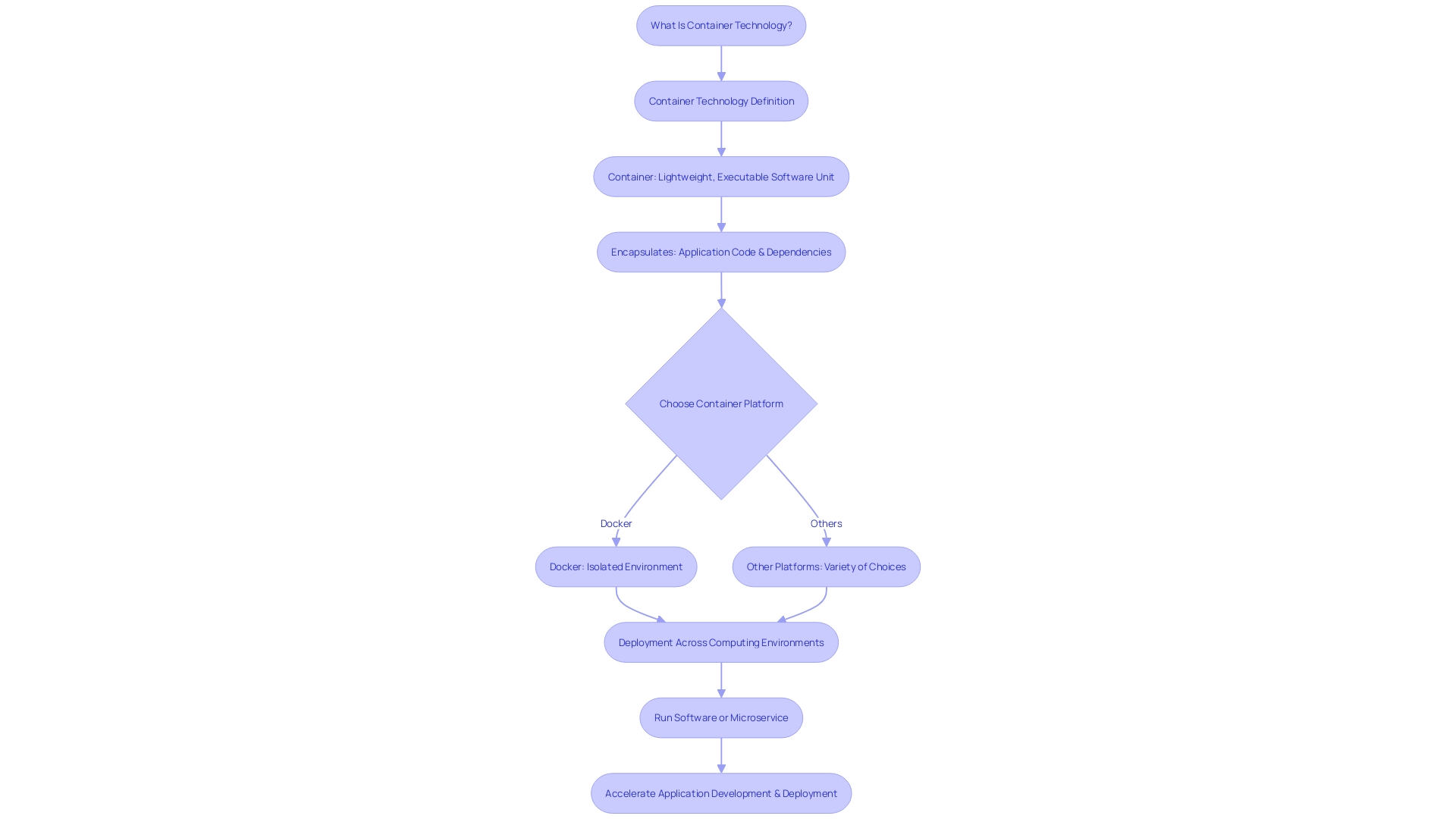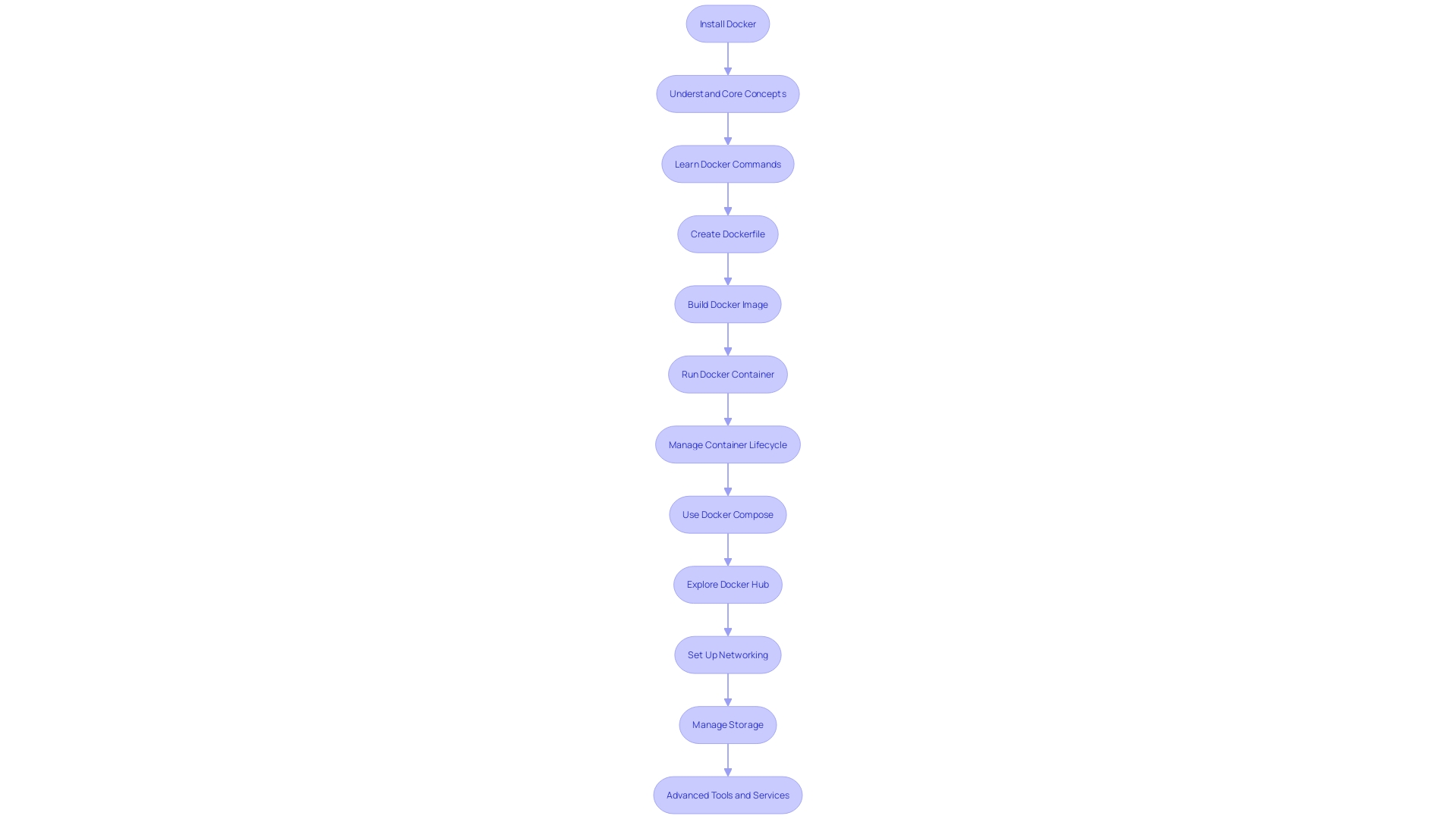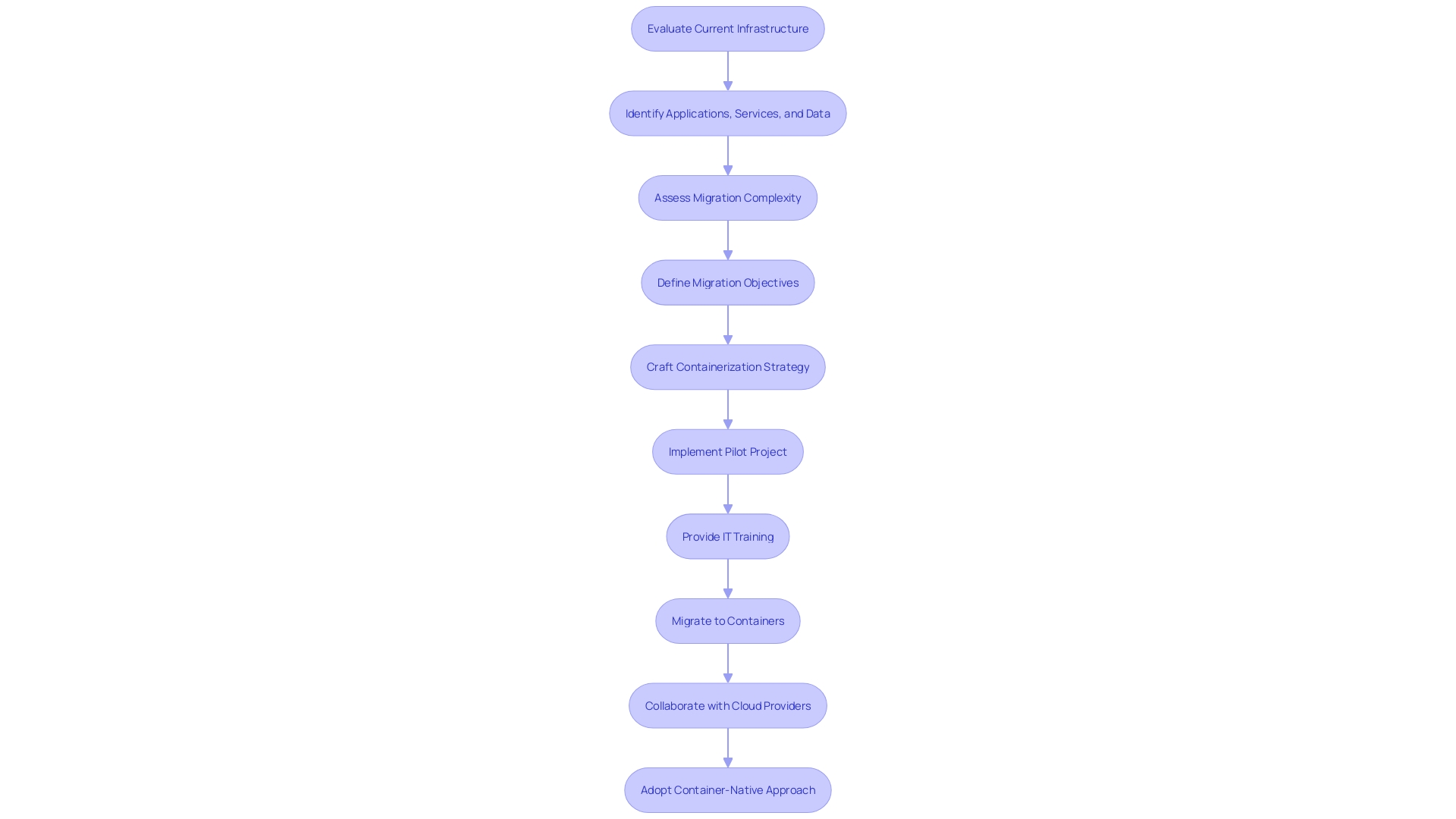Introduction
Containerization has emerged as a game-changing solution for deploying applications in the world of enterprise technology. By encapsulating applications and their dependencies within containers, companies can achieve consistent operation across various environments and manage high-volume, concurrent requests. This article explores the significance of containerization, highlighting real-world examples from companies like JaneTech and Tabcorp.
It also delves into the key benefits of containerization, provides insights into the leading container platform Docker, shares best practices for effective containerization, and explores how containerization enables scalable application deployment. Whether you're new to containerization or looking to optimize your containerization strategy, this comprehensive guide will equip you with the knowledge and tools to harness the full potential of containers in your enterprise.
What is Containerization and Why is it Important?
Containerization is leading the way in enterprise technology, providing a compact, efficient solution for deploying software. This approach encapsulates an application along with its dependencies, libraries, and configuration files within a container, facilitating consistent operation across various environments. The adoption of containerization by companies such as JaneTech, specializing in customized technology solutions for diverse industries, underscores its utility in maintaining software consistency and managing high-volume, concurrent requests. JaneTech's dedication to sustainable, dependable product delivery is demonstrated by their incorporation of containerization technology into their strategic approach.
Containers, notably Docker, have been pivotal in reshaping environments for software creation. For example, the shift of Tabcorp from implementing Java, Scala, Nodejs, and Microsoft. Net services directly to hardware to a more standardized containerized approach highlights the potential of containerization to streamline processes.
As emphasized by Scott Johnston, the CEO of the Docker platform, at DockerCon 2023, the platform's strong community and vast collection of shared applications and tools demonstrate its crucial role in contemporary application creation. With new product announcements aimed at secure, swift app delivery, the company continues to prioritize a 'shift-left' approach, integrating security earlier into the development lifecycle.
The significance of container technology is further validated by the 2024 Docker State of Application Development Report. With over 1,300 respondents sharing their insights, the report reveals the changing landscape of software creation, highlighting trends such as cloud integration, advancements in AI/ML, and the adoption of microservices architectures.
In summary, containerization is not just a trend but a cornerstone of enterprise technology strategies, enabling organizations to deploy applications rapidly and securely while supporting the necessary scalability. Its impact on the industry is evident, with enterprises like JaneTech leveraging Docker to navigate the complexities of multi-industry software compatibility and firms like Tabcorp optimizing their environments for improved consistency and efficiency.
Containerization vs. Virtualization: Understanding the Differences
As enterprises like JaneTech and Tabcorp navigate the complexities of software development across diverse industries, they increasingly turn to containerization as a solution for creating reliable and consistent software. Containerization, a lightweight and portable method, encapsulates a program with its dependencies, enabling it to run across different computing environments efficiently. Unlike virtualization, which emulates a complete operating system for each instance, containerization leverages the host system's OS. This distinction results in a more streamlined resource utilization, which is crucial for companies managing vast numbers of requests simultaneously.
A leading platform in the field of containerization, Docker showcases this efficiency by packaging applications into units—similar to how shipping containers standardized and revolutionized global trade. As Marc Levinson's book on shipping containers emphasizes, the standardization resulted in enhanced handling and decreased delays, a parallel observed in the impact of software deployment. Containers' ability to run applications in isolation while sharing the host OS's kernel allows for rapid scaling and deployment, which aligns with the needs of dynamic enterprises.
The significance of containerization is further emphasized by industry reports, such as the State of Application Development Report by the Docker platform. The results from the extensive survey of over 1,300 respondents show an evolving landscape where developers are increasingly embracing containers, cloud services, and AI/ML. These trends reflect the strategic direction technology leaders are taking to meet the demands of a competitive market.
In the data center industry, where scalability and efficiency are paramount, the move towards containerization is becoming a focal point. News of advancements in data center equipment further supports the need for scalable solutions like containerization. For technology firms, the ability to quickly adapt to new hardware capabilities without extensive reconfiguration is a testament to the agility that containerization offers.
In summary, containerization, as exemplified by Docker, stands at the forefront of enterprise software solutions. It offers a sustainable and efficient approach to meet the diverse and expanding needs of the modern digital landscape, as evidenced by the practices of innovative firms and industry-wide data.

Key Benefits of Containerization for Enterprises
Containerizationâthe encapsulation of a software with its dependencies in a containerâprovides several advantages for businesses looking to enhance their IT infrastructure.
-
Through the practice of resource optimization, organizations can enhance server efficiency and reduce hardware expenses by segregating software programs using specialized units. This approach mirrors JaneTech's sustainable development strategy, which utilizes vessel technology to ensure reliable and consistent performance across various projects.
-
Scalable Architecture: The lightweight quality of containers enables effortless scaling of software. Organizations can modify their infrastructure with minimal effort by adding or removing storage units in response to demand changes. This scalability has been crucial for JaneTech, which manages a high volume of concurrent requests across platforms, and for companies like Tabcorp, streamlining deployment across diverse teams and platforms.
-
Rapid Deployment: Containers simplify the deployment process, enabling faster delivery and quicker response to market changes. This is demonstrated by Docker, a widely adopted platform for containers that speeds up deployment of software, which has become essential to JaneTech's development strategy for its lasting influence on clients.
-
Security and Isolation: Containers offer security advantages by separating programs, minimizing the possibility of interference and vulnerability exploitation. Techniques such as network access restrictions and fine-grained access controls add layers of security, aligning with the isolation and security needs of complex environments, as faced by Tabcorp.
-
Consistent Environments: The portability of containers ensures consistency by encapsulating an application's dependencies, making them easily transferable across different environments. This consistency is especially important for companies like JaneTech, which aims to uphold uniformity in software creation despite the variety of its projects.
-
Streamlined Containerization: Containerization supports a modular process, allowing developers to focus on their specific components without concern for infrastructure compatibility. This leads to more efficient cycles and collaboration, a concept that is fundamental to JaneTech's diverse and inclusive approach to software solutions.
These benefits are supported by the 2024 State of Application Progress Report, which indicates a widespread adoption of container technology to foster accelerated progress, deployment, and innovation in software practices.
Getting Started with Docker: The Leading Container Platform
The containerization landscape is illuminated by a platform, which provides a range of tools for the creation, deployment, and management of containers, and has gained extensive adoption in the software development industry. Embarking on your Docker journey involves a series of steps to fully harness its capabilities:
-
Install the software: The first step requires setting up the application on your system. It is compatible with a range of operating systems including Windows, macOS, and Linux, ensuring accessibility for diverse development environments.
-
Acquiring a foundational understanding of the core concepts such as images, containers, and Dockerfiles is essential. This knowledge empowers you to utilize pre-built images from Hub and run them effectively.
-
Create Your Own Images: Advancing from fundamentals, mastering the art of creating your own images using Dockerfile is an essential expertise. It's important to grasp the syntax and employ best practices to create images that are not only efficient but also secure.
-
Deploy Containers with Compose: Compose simplifies the orchestration of multi-container applications. Becoming proficient in Compose enables you to define and oversee services, networks, and volumes, simplifying deployment with a single command.
-
Explore the Ecosystem of Containerization: Beyond its core functionalities, the environment of Docker is replete with tools and services that enhance its utility. Technologies like Docker Swarm for orchestration and Kubernetes for managing containerized applications at a large scale are worth exploring to leverage Docker's full potential.
As the industry evolves, the role of Docker in facilitating a consistent lifecycle is underscored by its ability to encapsulate an application with its dependencies into a portable container. This guarantees smooth operation across different computing environments, tackling the challenges of software firms like JaneTech that aim for sustainable and dependable solutions across diverse projects and platforms. The significance of Docker is further illuminated by the 2024 State of Application Development Report, which reflects on its indispensable role in modern development practices and its continuous adaptation to meet the market's dynamic needs.

Best Practices for Containerization with Docker
To utilize the complete capability of the technology in your containerization strategy, adherence to established best practices is critical. Here's how you can optimize your Docker usage:
-
Containers should be transient, according to Docker's official documentation. Build your images as templates for disposable objects that can be quickly replaced without losing your application's state. This encourages statelessness, making your system more resilient and scalable.
-
Embrace version control for your Docker images to maintain a history of changes, facilitating easy rollbacks when necessary. This method corresponds to the growing focus on supply chain security, guaranteeing traceability and maintainability of your units.
-
Safety is essential when deploying enclosures. Recent studies have shown a concerning amount of weaknesses in widely used storage units. Therefore, regular updates and vulnerability scanning are essential, alongside employing secure base images and robust access controls.
-
Performance monitoring is key to a seamless containerized environment. Utilize monitoring tools to track performance of the objects and address bottlenecks, ensuring efficient resource utilization and optimal system performance.
-
Implement strict backup and disaster recovery protocols for your storage units. Regular backups of critical data and a well-defined recovery strategy are essential to minimize downtime and maintain business continuity in the event of system failures.
In the spirit of innovation, Docker continues to evolve, as seen at DockerCon with the introduction of Docker AI and hot reloading in Docker Compose, which streamlines the process of enhancing applications. This ongoing evolution further emphasizes the requirement for a disciplined approach to management, as demonstrated by software development firms like JaneTech, which seamlessly integrate Docker into their diverse and complex projects.
Scaling Applications with Containers
Containerization has transformed the way enterprises deploy and manage software, particularly in developing microservice architectures. By encapsulating individual features into compartments, organizations like JaneTech harness the power of vessel orchestration tools, such as Kubernetes, to facilitate horizontal scaling. This enables dynamic resource allocation in response to fluctuating demand, maintaining application performance even as traffic spikes.
Central to this scalability is the adoption of load balancing, which distributes incoming traffic across multiple units to optimize response times and workload distribution. This not only guarantees a smooth user experience but also enables health checks that redirect traffic away from underperforming compartments, preserving service continuity.
Moreover, the utilization of auto-scaling capabilities is paramount. By setting predetermined metrics, such as CPU load or request rates, orchestration platforms can automatically adjust the number of active units. This responsive scaling is critical in environments where demand can rapidly change, such as in the diverse industries served by JaneTech.
However, scaling is not solely about adjusting quantities; it's also about resource management. Continuous monitoring and analysis of resource utilization help in fine-tuning container specifications to match needs, ensuring optimal efficiency and cost-effectiveness. JaneTech, for example, must balance the demands of bespoke solutions across media, education, gaming, and virtual reality, each with its unique performance requirements.
In the context of security, while containerization offers numerous developmental and operational benefits, companies must consider the associated risks. Traditional security solutions may not align with container-based infrastructures, necessitating specialized measures to protect these environments. With a history tracing back to the virtual machines of the last decade, containerization continues to evolve, integrating with continuous integration and delivery (CI/CD) practices to expedite and refine software deployment.
By adopting a container-centric approach to scalability, organizations can ensure that their software not only meets current demands but is also prepared to adapt to future growth and technological advancements.
Transitioning to Containers: A Step-by-Step Guide
Migrating to a containerized environment is a multifaceted endeavor that demands a structured approach, yet it can be significantly streamlined by learning from those who have already navigated this path. To initiate a successful transition to containerization within an enterprise, it is vital to first evaluate the current landscape of the applications, pinpointing those that are prime candidates for containerization based on their complexity, dependencies, and significance to the business.
Once this assessment is complete, it is crucial to define clear objectives for the containerization project. These objectives could range from enhancing deployment speeds and optimizing resource utilization to achieving better scalability. With a vivid understanding of the desired outcomes, the next step involves crafting a detailed containerization strategy, encompassing the necessary steps, timelines, and resources. This strategy should address infrastructure needs, security protocols, and the training requirements for IT personnel.
A practical approach to validating this strategy is to implement a pilot project, focusing on a non-essential system. This permits the utilization of optimal approaches in a regulated environment, with the chance to iterate based on the outcomes. Providing the necessary training to the IT team is crucial to equip them with the knowledge needed for container technologies and orchestration platforms like Docker, which continues to be a favored option for its open-source system that packages software in containers, taking advantage of Linux Kernel capabilities.
The step-by-step movement of software to receptacles is recommended, commencing with those that present the lowest hazard and gradually addressing more intricate ones. This phased approach facilitates close monitoring of the process, enabling prompt resolution of any issues that arise, thus minimizing interruptions to business operations. For instance, one innovative strategy employed by the UK Government Digital Service involved a trial-run on a live website, focusing on components serving public web pages. This trial-run not only provided an interim milestone but also unearthed minor issues that could have impacted the final launch.
Moreover, partnering with experienced cloud service providers, such as Rackspace Technology, can offer invaluable insights and alternative methods to the containerization journey. Companies like IFCO have benefited from leveraging Rackspace's experience to complement their small IT departments, indicating the importance of collaboration with knowledgeable partners.
In the broader context, companies like LinkedIn have undergone extensive internal engineering efforts to transition to Azure Linux, a testament to the internal commitment required for such a transition. Additionally, Red Hat's introduction of image mode for Red Hat Enterprise Linux, which delivers the platform as a container image, exemplifies the industry's move towards a container-native approach to managing operating systems and applications alike.
By following this structured guide, supported by real-world examples and strategic partnerships, enterprises can effectively transition to a containerized environment. This transition not only aligns with the latest trends in technology but also positions enterprises to leverage the full potential of containerization, as evidenced by the Docker State of Application Development Report which highlights the growing adoption of Docker and the increasing relevance of cloud and AI/ML in software development.

Conclusion
Containerization has revolutionized enterprise technology by encapsulating applications and their dependencies within containers. This approach enables consistent operation across different environments and efficient management of high-volume, concurrent requests. Real-world examples from companies like JaneTech and Tabcorp demonstrate the significant impact of containerization in streamlining development processes and ensuring software consistency.
The benefits of containerization for enterprises are numerous. It optimizes resource utilization by allowing multiple applications to run on a single server, reducing hardware expenses and increasing efficiency. It provides scalable architecture, enabling organizations to easily adjust their infrastructure based on demand changes.
Rapid deployment is simplified, allowing for faster delivery and quicker response to market changes. Containers also offer security benefits by isolating applications and minimizing the risk of interference and vulnerability exploitation. Their portability ensures consistent environments by encapsulating dependencies and enables streamlined development by allowing developers to focus on specific components without worrying about infrastructure compatibility.
Docker stands out as a leading container platform, offering a comprehensive suite of tools for creating, deploying, and managing containers. Its widespread adoption and continuous evolution highlight its significance in modern development practices. By installing Docker, learning its core concepts, building custom images, and exploring the Docker ecosystem, organizations can fully leverage its capabilities and enhance their containerization strategy.
To optimize Docker usage, adherence to best practices is crucial. Containers should be ephemeral, allowing for swift replacement without losing application state. Version control, security measures, performance monitoring, and backup protocols are essential considerations.
By following these practices, enterprises can effectively manage their containerized environments and maximize the benefits of Docker.
Containerization plays a pivotal role in scaling applications, particularly in microservice architectures. By utilizing container orchestration tools like Kubernetes, organizations can achieve dynamic resource allocation and maintain application performance even during traffic spikes. Load balancing and auto-scaling capabilities further optimize response times and workload distribution.
Transitioning to a containerized environment requires a structured approach, evaluating the current application landscape, defining clear objectives, and crafting a detailed containerization strategy. Implementing pilot projects, training the IT team, and gradually migrating applications ensure a successful transition. By embracing containerization, enterprises can effectively navigate the complexities of modern software development and meet the demands of a dynamic market.




